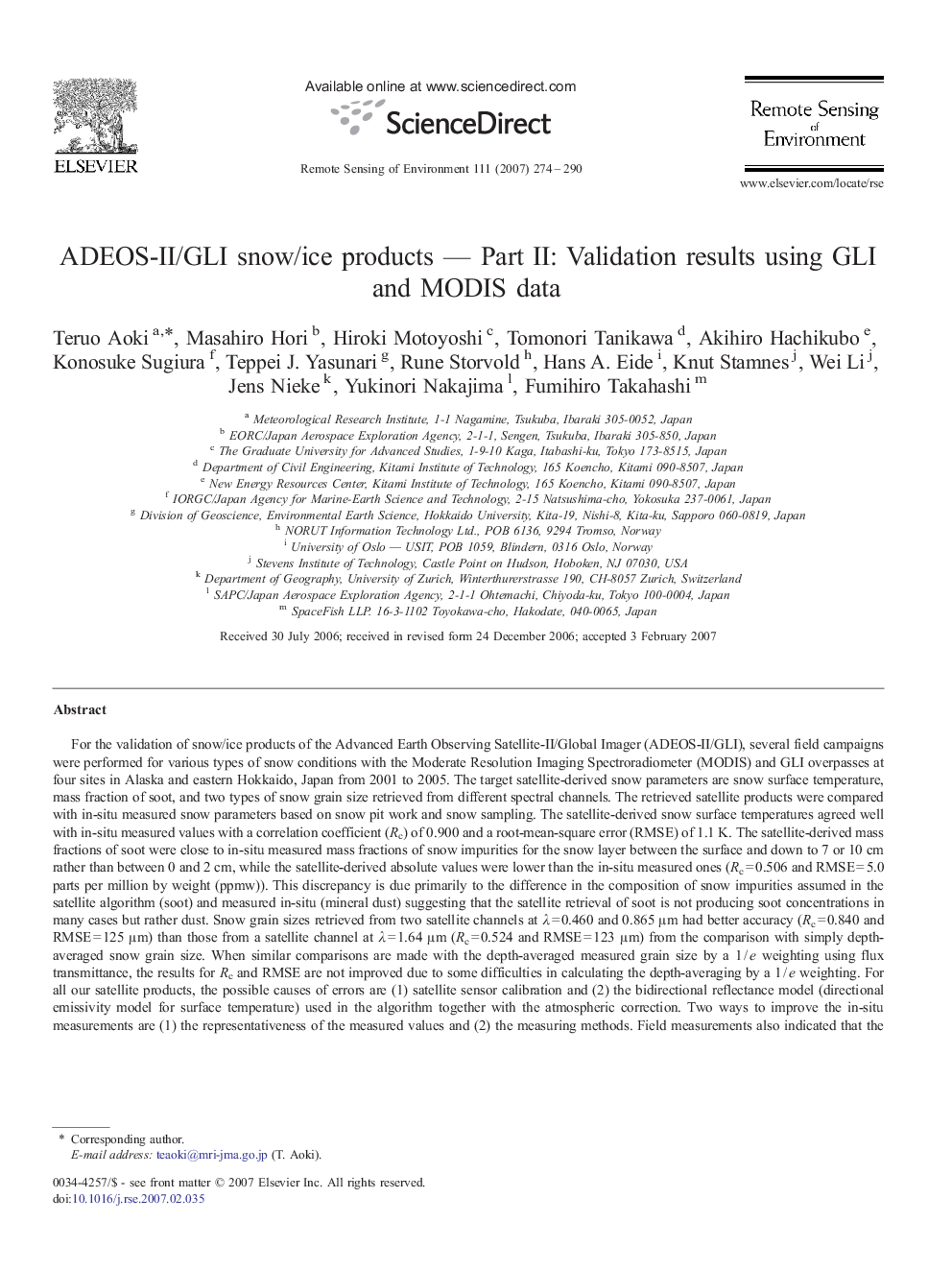| کد مقاله | کد نشریه | سال انتشار | مقاله انگلیسی | نسخه تمام متن |
|---|---|---|---|---|
| 4460425 | 1621335 | 2007 | 17 صفحه PDF | دانلود رایگان |

For the validation of snow/ice products of the Advanced Earth Observing Satellite-II/Global Imager (ADEOS-II/GLI), several field campaigns were performed for various types of snow conditions with the Moderate Resolution Imaging Spectroradiometer (MODIS) and GLI overpasses at four sites in Alaska and eastern Hokkaido, Japan from 2001 to 2005. The target satellite-derived snow parameters are snow surface temperature, mass fraction of soot, and two types of snow grain size retrieved from different spectral channels. The retrieved satellite products were compared with in-situ measured snow parameters based on snow pit work and snow sampling. The satellite-derived snow surface temperatures agreed well with in-situ measured values with a correlation coefficient (Rc) of 0.900 and a root-mean-square error (RMSE) of 1.1 K. The satellite-derived mass fractions of soot were close to in-situ measured mass fractions of snow impurities for the snow layer between the surface and down to 7 or 10 cm rather than between 0 and 2 cm, while the satellite-derived absolute values were lower than the in-situ measured ones (Rc = 0.506 and RMSE = 5.0 parts per million by weight (ppmw)). This discrepancy is due primarily to the difference in the composition of snow impurities assumed in the satellite algorithm (soot) and measured in-situ (mineral dust) suggesting that the satellite retrieval of soot is not producing soot concentrations in many cases but rather dust. Snow grain sizes retrieved from two satellite channels at λ = 0.460 and 0.865 μm had better accuracy (Rc = 0.840 and RMSE = 125 μm) than those from a satellite channel at λ = 1.64 μm (Rc = 0.524 and RMSE = 123 μm) from the comparison with simply depth-averaged snow grain size. When similar comparisons are made with the depth-averaged measured grain size by a 1 / e weighting using flux transmittance, the results for Rc and RMSE are not improved due to some difficulties in calculating the depth-averaging by a 1 / e weighting. For all our satellite products, the possible causes of errors are (1) satellite sensor calibration and (2) the bidirectional reflectance model (directional emissivity model for surface temperature) used in the algorithm together with the atmospheric correction. Two ways to improve the in-situ measurements are (1) the representativeness of the measured values and (2) the measuring methods. Field measurements also indicated that the increased reflectance due to “sun crust” observed at wet snow surfaces under clear sky could cause an underestimation of satellite-derived snow grain size. This problem will be more severe for the grain size retrieved from the channel at λ = 1.64 μm.
Journal: Remote Sensing of Environment - Volume 111, Issues 2–3, 30 November 2007, Pages 274–290